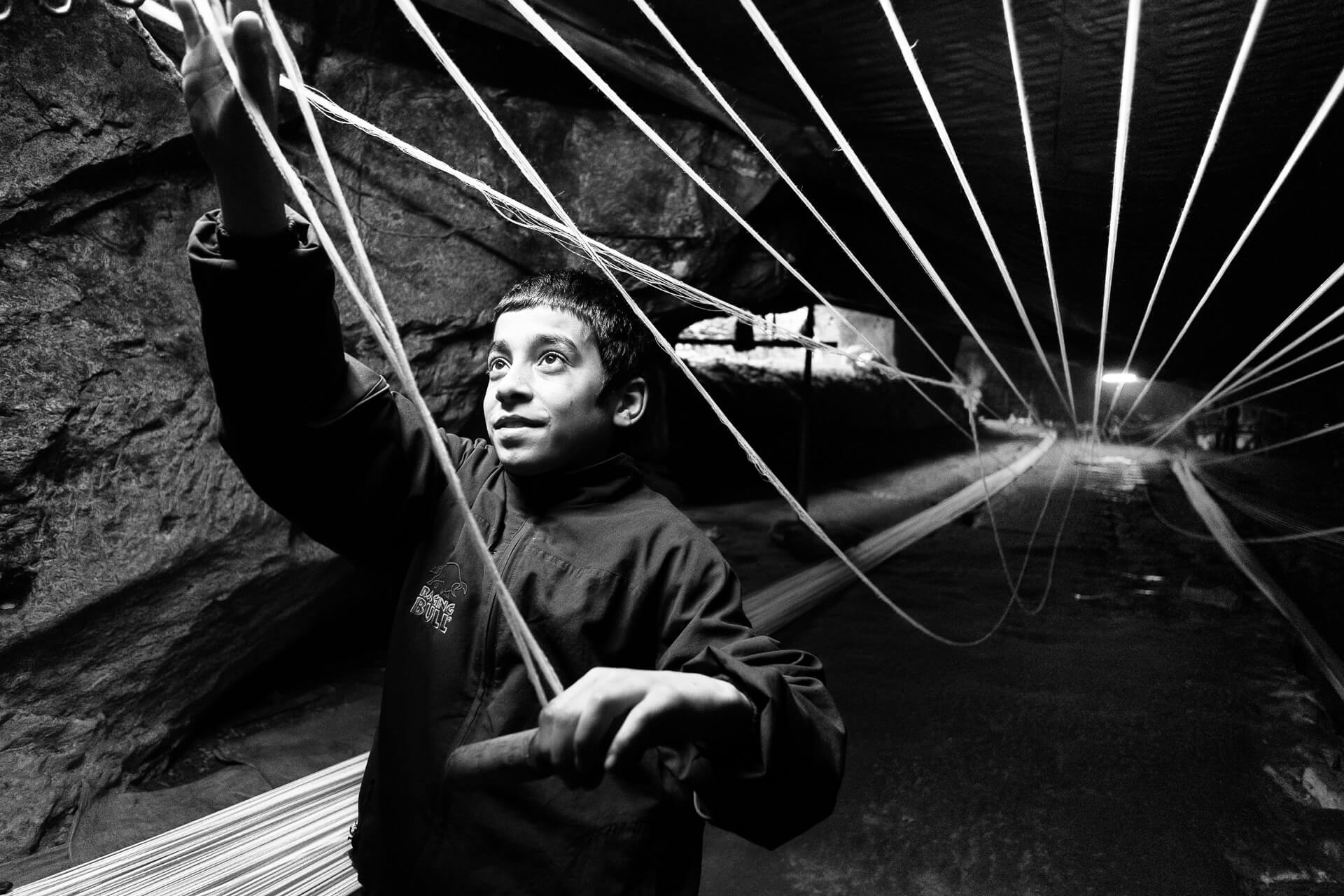
Harnessing hemp rope in Turkey goes back to 200 years old. The ropes produced with this method is used in fisherman nets, hammocks, clothes-line or any kind of work that requires strong ropes. In rope making, four basic steps are identified: preparing the fibre, spinning the fibers together to form yarns, twisting the yarns in bunches to form strands, and winding the strands in rope. The locals of Gaziantep, including the children between 7-13 years old, are working in damp caves which are still inside the city. The reason they prefer to work in caves is because humidity helps the fibers to be harnessed more easily and moist helps fibers to stay stable and strong. While harnessing the rope they have to walk between two stations (wheels), made of wood and run manually by man-power. At the end of the working day the total distance they walk may reach up to 50 km or even more. The locals bring their kids or nephews in summers when the schools are closed and teach them the old-fashioned method of hemp weaving.
Subscribe to my newsletter and don’t miss new articles, upcoming photography workshops and learning materials.
© 2021 Enis Yücel Photography. All rights reserved. The material on this site may not be reproduced, distributed, transmitted, cached or otherwise used, except with prior written permission of Enis Yücel.